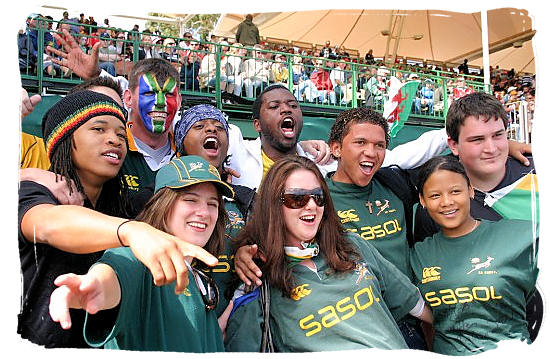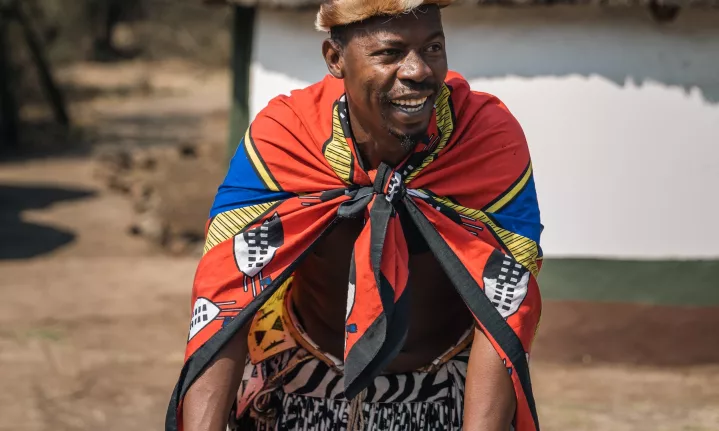The 8-Minute Rule for South African Culture Today
The 8-Minute Rule for South African Culture Today
Blog Article
South African Culture Today Can Be Fun For Anyone
Table of ContentsThe 6-Second Trick For South African Culture TodayLittle Known Facts About South African Culture Today.All about South African Culture TodayNot known Details About South African Culture Today Fascination About South African Culture TodayIndicators on South African Culture Today You Should Know
A matter of significance in Zambian towns is the passing away of enjoyed ones. All members of the village placed cash, time and initiative together for the burial of the deceased.Throughout the grieving duration; men stay outside the home and the females remain inside your home of the deceased. After speaking about the dead, the town strolls to the place of funeral to state their last bye-byes. Songs and dancing is an extremely important facet of the Zambian society. The various tribal systems have their very own dancing kinds; nonetheless, makishi prevails amongst all tribes.
The 25-Second Trick For South African Culture Today
When it involves music, drums are made use of one of the most, with a variety of drumming ceremonies. In Zambia, majority of individuals are Christian; Protestant and Roman Catholic. There are small groups of Muslims and Hindus, with the rest following local indigenous tribal ideas.

South African heritage and culture is exceptionally diverse, and contains several groups of individuals who each have their very own practices and ideas. Having such a diversity of people and cultures is what makes South Africa so distinct. In real sense of the phrase, we are a rainbow nation.
Making it the 7th on the checklist of nations with the most Portuguese people in it outside of Portugal. Portuguese is not only a culture, but it is additionally a language and a race. Portuguese individuals stem from the country of Portugal in Europe, however, due to Portugal (like many various other nations in Europe) exploring the globe and overcoming various other countries during the 15th 20th centuries, South Africa has what we call Portuguese South African's living in it.
Some Of South African Culture Today
Amongst the prominent attributes of the topography is a plateau that covers practically two thirds of the center of the nation. The plateau facility rises toward the southeast, where it climaxes in the Drakensberg array, part of a cliff that separates the plateau from the seaside areas. The Drakensburg consists of Champagne Castle, the greatest peak in the nation.
The area north of the Witwatersrand, called the bushveld, slopes downward from eastern to west toward the Limpopo River, which develops the global border. The western area of the plateau, the middleveld, also comes down in the direction of the west and varies in altitude in between the highveld and bushveld. Between the Drakensburg and the eastern and southerly coast, the land descends to the sea.
Nearer the shore there is a low-lying level called the eastern lowveld. Southwest of the plateau the country ends up being progressively a lot more dry, paving the way to the hostile desert of the Great Karroo, approached the eastern by the lower, better sprinkled plateau of the Little Karroo. Dividing the dry southern inside from the sandy coastal of the southern coast and West Cape is one more array, the Langeberg.
What Does South African Culture Today Do?
The nation's racially, ethnically, and politically divided history has produced national and subnational icons that still function as icons of the nation, and others icons that are approved just by particular teams. The monuments to white settler conquest and political dominance, such as the Afrikaner Voortrekker ("pioneer") Monolith in Pretoria and the Rhodes Monolith recognizing the British colonial realm home builder and Cape prime priest Cecil Rhodes, stay sectarian signs.
The first modern residents were the San ("bushman") hunter-gatherers and the Khoi ("Hottentot") peoples, that rounded up livestock (South African culture today). The San may have existed for hundreds of years and left proof of their existence in thousands of old cavern paints ("rock art"). Bantu-speaking clans that were the ancestors of the Nguni (today's amaZulu, amaXhosa, amaSwazi, and vaTsonga peoples) and Tswana-Sotho language teams (today's Batswana and Southern and Northern Basotho) moved below east Africa as early as the fifteenth century

The two previous republics of the Orange Free State and Transvaal (South African Republic) were developed by Afrikaner settlers that beat and dispossessed the Basotho and Batswana. Lesotho would have been by force incorporated into the Orange Free State without the expansion of British protection in 1869. The best unification of the country arised from the South African War (18991902) between the British and both Afrikaner republics, which reduced the nation to ruin at the beginning of the twentieth century.
Afrikaners traditionally considered themselves the just true South Africans and, while approving complete citizenship to all residents of European descent, rejected that standing to people of color up until the autonomous transition of 1994. British South Africans keep a sense of cultural and social connection to Great Britain without weakening their identity as South Africans.
6 Simple Techniques For South African Culture Today
The diversity and fragmentation within ethnic groupings and the balance of tensions in between those teams throughout the twentieth century protected against interethnic civil problem. While intergroup stress over sources, privileges, and political supremacy stay, those disputes are as likely to pit Zulu against Zulu as Zulu versus Xhosa or African versus Afrikaner.
From colonial India, British vendors and administrators brought the curved metal decorative roof coverings and slim shoelace work pillars that still represent the verandas of homes in the areas and cities throughout the country. Homes of worship contribute a vital building element even in the smallest communities. In addition to the soaring steeples and classic stonework of Afrikaans Dutch Reformed churches, Anglican churches, synagogues, mosques, and Hindu temples supply range to the religious building scene.

Slaughtering and the brewing of typical cereal beer are important in securing the involvement and a good reputation of the ancestors who are taken into consideration the guardians of good luck, prosperity, and well-being. Indian neighborhoods maintain their native culinary traditions and use them on Islamic and Hindu ritual and ritualistic celebrations. Afrikaners and directory Coloured people gather at weekends and unique celebrations at multifamily barbecues called braais, where neighborhood bonds are reinforced.
Due to the fact that this was the primary economic business of both black Africans and white homesteaders, problem between those groups fixated the property of grazing land and animals. In 1867, the largest diamond deposits in the world were found at Kimberley in the west main location. The riches from those areas aided fund the exploitation of the best gold reef on the planet, which was discovered on the Witwatersrand in 1886.
The South African Culture Today PDFs
This brought about misunderstandings and purposeful misstatement in the negotiations of white settlers and government authorities with African chiefs throughout the early american period (South African culture today). In the establishment of African reserves, some elements of common and chiefly "tribal trust" land period were maintained, and even in white country areas, kinds of communal tenure were still exercised best site in locations with African communities
After the autonomous change of 1994, programs for land restitution, redistribution, and reform were set up, however progression has been sluggish. The white minority still manages eighty percent of the land. In the wake of farming visit their website land intrusions in Zimbabwe, the Department of Land Matters has promised to speed up land redistribution.
Report this page